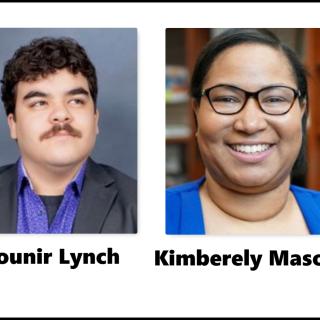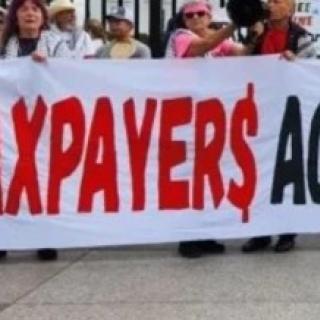Advertisement
The holiday weekend’s smoke has cleared from the summer sky, but a different kind of haze lingers over cities like Columbus. It is the acrid aftermath of a celebration scarred by gunfire, a pall that hangs over communities trying to reconcile the promise of America’s birthday with the reality of its violence.
On the South Side at a house party that should have been filled with the sounds of summer, the life of 17-year-old Cameron Moore was extinguished. His death was one of at least six youth fatalities in a five-day span that saw 25 other young people wounded in shootings across America.
The bloodshed was as tragic as it was predictable. Criminologists like James Alan Fox of Northeastern University have long identified Independence Day as consistently the most violent day of the year in the United States. The holiday’s mix of large social gatherings, warm temperatures, and alcohol consumption creates a volatile environment where the presence of firearms can instantly escalate conflict to fatal ends. This year was no exception as local officials grapple with the paradox of surging violence against a backdrop of statistically declining crime.
“I am furious and saddened at the recklessness of this violence,” Mayor Andrew Ginther said at a press conference on Monday. “Violence particularly involving and affecting young people is completely and totally unacceptable in our community.”
In Columbus, the police response has been a full-court press. Deputy Chief Robert Sigel detailed a raft of recent initiatives, from a juvenile warrant roundup to the seizure of 363 firearms by the Organized Crime Bureau so far this year. The city’s Crime Gun Intelligence Center, a partnership with state and federal agencies, now processes ballistic evidence in two to three days instead of months, a development that has pushed the homicide case closure rate to 78 percent, well above the national average.
The sentiment from Columbus officials is that law enforcement cannot be the only answer. “It can’t just be a police option,” said City Council President Shannon Hardin, who highlighted a $28.2 million investment in youth programming this year. “It’s going to need to be everyone taking responsibility for themselves, for their community, for each other.”
That call for parental and community accountability rang with raw urgency 175 miles away in Indianapolis, Indiana. After a mass shooting left two teenagers, 15-year-old Azareaon Cole and 16-year-old Xavion Jackson, dead among a crowd of “hundreds of unsupervised kids,” Police Chief Chris Bailey did not mince words. “We are not your children's keepers. You are!” he declared. “And parents and guardians have got to step up.” His officers had recovered an assault rifle from a juvenile in the hours before that shooting began.
The stories repeated themselves in a devastating cascade. In Albany, New York, a fight between teenagers escalated to gunfire that wounded four people, including two 17-year-old males; hours later, another group of teens opened fire, wounding four more youth. In Chicago, Illinois, 16-year-old Meeyah Smith was shot and killed. In Philadelphia, Pennsylvania, six teenagers were among the victims of a single mass shooting. And in Washington, D.C., a 3-year-old girl was critically wounded by a stray bullet while sitting in a car.
The search for solutions has driven officials to address a wide spectrum of societal issues. Mayor Ginther is advocating for stronger gun control measures at the state and federal level, a call echoed by Ohio State Representative Latyna Humphrey (OH-2), who is pushing for the enforcement of background checks and safe storage laws. Rep. Humphrey also stressed the need for more spaces dedicated to conflict resolution in schools and community centers. The problem of large, unpermitted parties at short-term rentals, like the one where Cameron Moore was killed, is now a target for “creative solutions” by the city. And underneath it all is the recognition of a desperate need for more accessible mental health care, especially for at-risk youth.
While Columbus and other cities search for a foothold against the tide, Baltimore, Maryland appears to have found one. A city long synonymous with intractable violence is now amid a historic decline in homicides, with numbers in the first half of 2025 reaching a 50-year low. Under Mayor Brandon M. Scott, the city is proving that a cycle of violence can be broken, providing a potential roadmap for cities like Columbus.
A deep analysis of Baltimore’s strategy reveals that its success is not merely the result of “giving the kids something to do,” though that is a critical piece. It is the product of a sophisticated, dual-pronged strategy, institutionalized by a legally mandated Comprehensive Violence Prevention Plan (CVPP) that treats violence as a public health epidemic.
The first prong is the “stick”: the Group Violence Reduction Strategy (GVRS). This is not broad, dragnet policing. It is a highly targeted data-driven model that focuses intense pressure on the very small number of individuals identified as driving a disproportionate amount of gun violence. The “stick” is an unambiguous message from law enforcement: any future violence from them or their group will be met with the full, swift weight of local, state, and federal prosecution. These individuals are given a clear choice with the “carrot”: a credible, immediate offer of intensive support – life coaching, job training, housing assistance – from specialized non-profit partners. An evaluation by the University of Pennsylvania found GVRS was responsible for a 25 percent reduction in homicides and shootings.
The GVRS targeted intervention creates the public safety dividend – the breathing room – that allows the second prong to flourish: a massive, systemic investment in youth and community. This is where “giving kids something to do” is transformed from a simple diversion into a sophisticated, multi-layered developmental and restorative approach.
YouthWorks is a Baltimore summer jobs program for over 10,000 young people, explicitly framed and funded by the city as a core public safety strategy. This is layered with tens of millions in investment to create and sustain “third spaces” – the crucial social environments separate from home and school – by reopening and staffing 44 recreation centers and supporting a vibrant ecosystem of non-profit partners that provide safe spaces for everything from STEM education centered on dirt bike culture to nature-based healing.
This entire apparatus – the stick of GVRS and the carrot of deep youth investment – is designed to be a virtuous cycle. The immediate, focused impact of GVRS gains the political capital needed to sustain the long-term, preventative work of the youth programs. In turn, this broad investment in opportunity, safe spaces, and mentorship addresses the root causes of violence, ultimately shrinking the pool of individuals who might be drawn into the life that GVRS targets.
This brings the focus back to Columbus and its own record investment of nearly $30 million in summer violence prevention. The city possesses many of the individual components of Baltimore’s success. Its Crime Gun Intelligence Center is designed to target “actual shooters,” and it works with partners to offer resources to those looking for a different path. It has invested millions in youth programming. But the question Baltimore’s success poses is one of strategy and synergy. Are these components operating as part of an integrated, institutionalized public health framework? Is the offer of help to those at the highest risk as credible, direct, and immediate as the threat of enforcement? Is the city’s significant financial commitment being deployed not just as a series of well-meaning programs, but as a comprehensive developmental strategy designed to address the root causes of poverty, trauma, and lack of opportunity?
For the public, the reality is a confusing juxtaposition of falling crime statistics and the visceral terror of a holiday weekend that felt anything but safe. Creating lasting change, as officials here admit, will take sustained effort and a partnership with the community that feels increasingly urgent. The challenge remains stark: how to mend the fabric of a community where the sounds of celebration can so quickly be replaced by the wail of sirens. Baltimore’s journey suggests that the answer lies in a disciplined, dual-pronged strategy that is as committed to building futures as it is to stopping the violence.
-----------------------------
DaVante’ Goins is an independent journalist and NAACP Columbus branch member who studied at Wittenberg University and Chief Executive Officer (CEO) & Founder at Kin Worldwide



